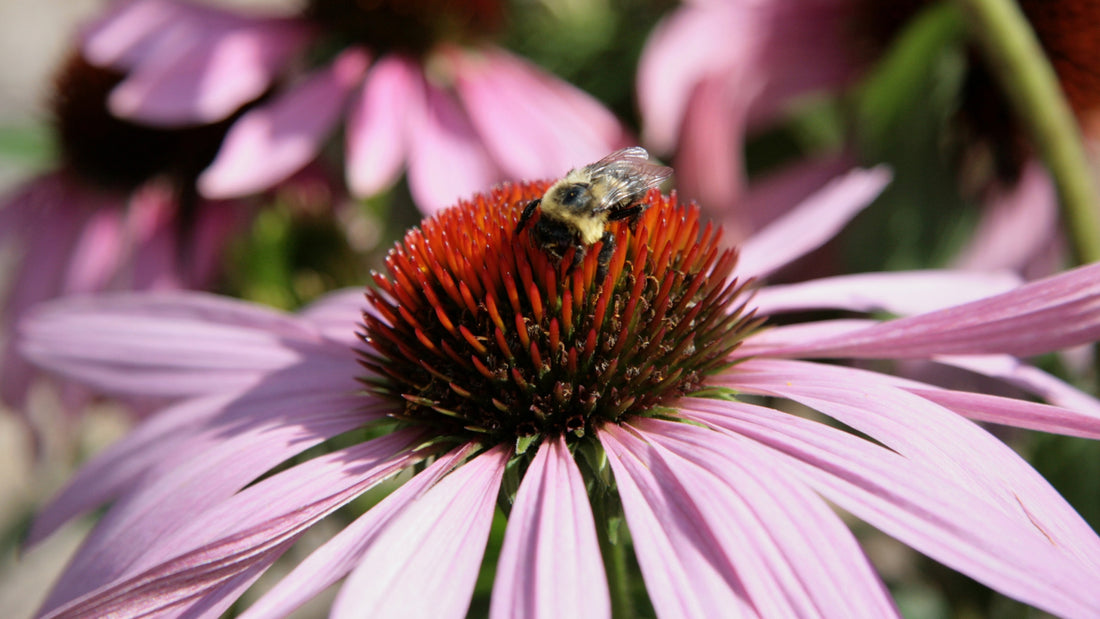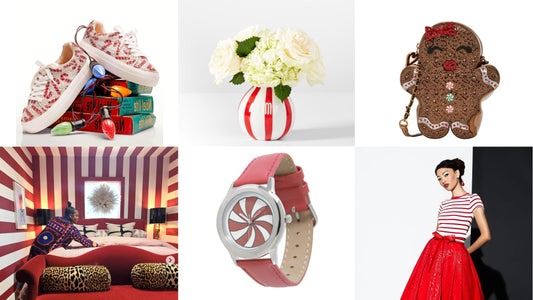Are you tired of feeling like a wallflower at the garden party? Want to bee-come the buzz of the neighborhood? Well, it's time to start planting for pollinators! Not only will you be the talk of the town, but you'll also be doing your part to help the bees, butterflies, and other important pollinators. So let's get started!
Why pollinators are important
We’re paying homage to our esteemed pollinators who don’t get enough buzz about their benefits. Did you know that bees and other pollinators are responsible for one out of every three bites of food we eat? That's right, without pollinators, we'd be stuck with a pretty bland diet. Plus, they help to keep our ecosystems healthy and thriving. So it's important to do our part to help them out. Here at Wondercide, we’re big fans of pollinators. Our biopesticides harness the power of nature to eliminate the bugs we don’t want in our gardens, and the residue is safe for the good bugs, the pollinators like bees and butterflies – and even the birds.
Pollinators are like the superheroes of the insect world, but without the fancy capes or the ability to fly faster than a speeding bullet. They may be small, but they play a huge role in keeping our ecosystem healthy and our world spinning. They help plants produce seeds or flowers. The Pollinator Partnership shares that these wondrous pollinators “support healthy ecosystems that clean the air, stabilize soils, protect from severe weather, and support other wildlife.”
Without them, we'd be living in a world without strawberries, blueberries, or avocado toast. And let's be real, who wants to live in a world without avocado toast? So, let's give a round of applause to the bees and their hard work, keeping our world a little sweeter, one pollinated plant at a time.
What to plant
What should you plant to help the pollinators? Here are 15 faves:
Bee Balm (Monarda didyma) - This plant's bright red or pink flowers attract bees, butterflies, and hummingbirds. It grows in Zones 4-9 and is a great source of nectar.

Butterfly Weed (Asclepias tuberosa) - This vibrant orange perennial grows in Zones 3-9 and is a favorite of monarch butterflies. Its nectar-rich flowers also attract other pollinators like bees and hummingbirds.

Sunflowers (Helianthus spp.) - These cheerful flowers are easy to grow and come in many different sizes and colors. They're a great source of pollen for bees and other pollinators and grow in Zones 1-10.

Lavender (Lavandula spp.) - This fragrant herb is a favorite of bees and butterflies and is known for its calming properties. It grows in Zones 5-9 and is a great addition to any garden.

Purple Coneflower (Echinacea purpurea) - This hardy perennial grows in Zones 3-9 and is a favorite of bees and butterflies. Its colorful flowers also attract birds, making it a great choice for any garden.

Goldenrod (Solidago spp.) - Despite its reputation as an allergen, goldenrod is actually a great source of nectar for bees and butterflies. It grows in Zones 3-9 and its bright yellow flowers add a cheerful touch to any garden.

Salvia (Salvia spp.) - This herbaceous perennial grows in Zones 4-9 and is a favorite of bees and hummingbirds. Its bright blue or purple flowers provide a good source of nectar.

Milkweed (Asclepias spp.) - This plant is essential for the survival of monarch butterflies as it's the only food source for their caterpillars. It grows in Zones 3-9 and its nectar-rich flowers attract other pollinators like bees and hummingbirds.

Marigolds (Tagetes spp.) - These bright annual flowers come in many different colors and sizes and are a favorite of bees and butterflies. They're easy to grow and thrive in Zones 2-11.

Phlox (Phlox spp.) - This perennial comes in many different colors and is a favorite of bees and hummingbirds. It grows in Zones 4-9 and provides a good source of nectar.

Black-Eyed Susan (Rudbeckia hirta) - This cheerful yellow flower is a favorite of bees and butterflies and grows in Zones 3-9. Its nectar-rich flowers also attract other beneficial insects like ladybugs.

Sage (Salvia officinalis) - This fragrant herb is a favorite of bees and other pollinators and grows in Zones 5-9. Its beautiful blue or purple flowers provide a good source of nectar.

Asters (Symphyotrichum spp.) - These beautiful perennials come in many different colors and are a favorite of bees and butterflies. They grow in Zones 3-9 and provide a good source of nectar.

Honeysuckle (Lonicera spp.) - This fragrant vine is a favorite of bees and hummingbirds and grows in Zones 4-9. Its nectar-rich flowers provide a good source of food.

Verbena (Verbena spp.) - This beautiful perennial comes in many different colors and is a favorite of bees and butterflies. It grows in Zones 7-10 and provides a good source of nectar.

How to plant
Now that you know what to plant, let's talk about how to plant them. First things first, make sure that the plants on your wish list will thrive in your horticultural zone. Check the amount of sun your desired new garden gets. Pollinators love the sun just as much as we do (maybe even more), so don't be afraid to let your garden soak up those rays. And don't forget to provide a water source for the pollinators, too. A simple bird bath or shallow dish with rocks will do the trick.
Bountiful benefits
So, what are the benefits of planting for pollinators, other than being the coolest kid on the block? For starters, you'll be helping to create a healthier ecosystem. Plus, you'll be providing food and habitat for important pollinators, which is essential for their survival. And let's not forget about the added bonus of having a beautiful, colorful garden to enjoy all season long.
Planting for pollinators is not only a great way to improve your garden game, but it's also an important way to help our ecosystem and the important pollinators that call it home. So get out there and start planting. The bees will thank you, in their own, buzz-y way.




